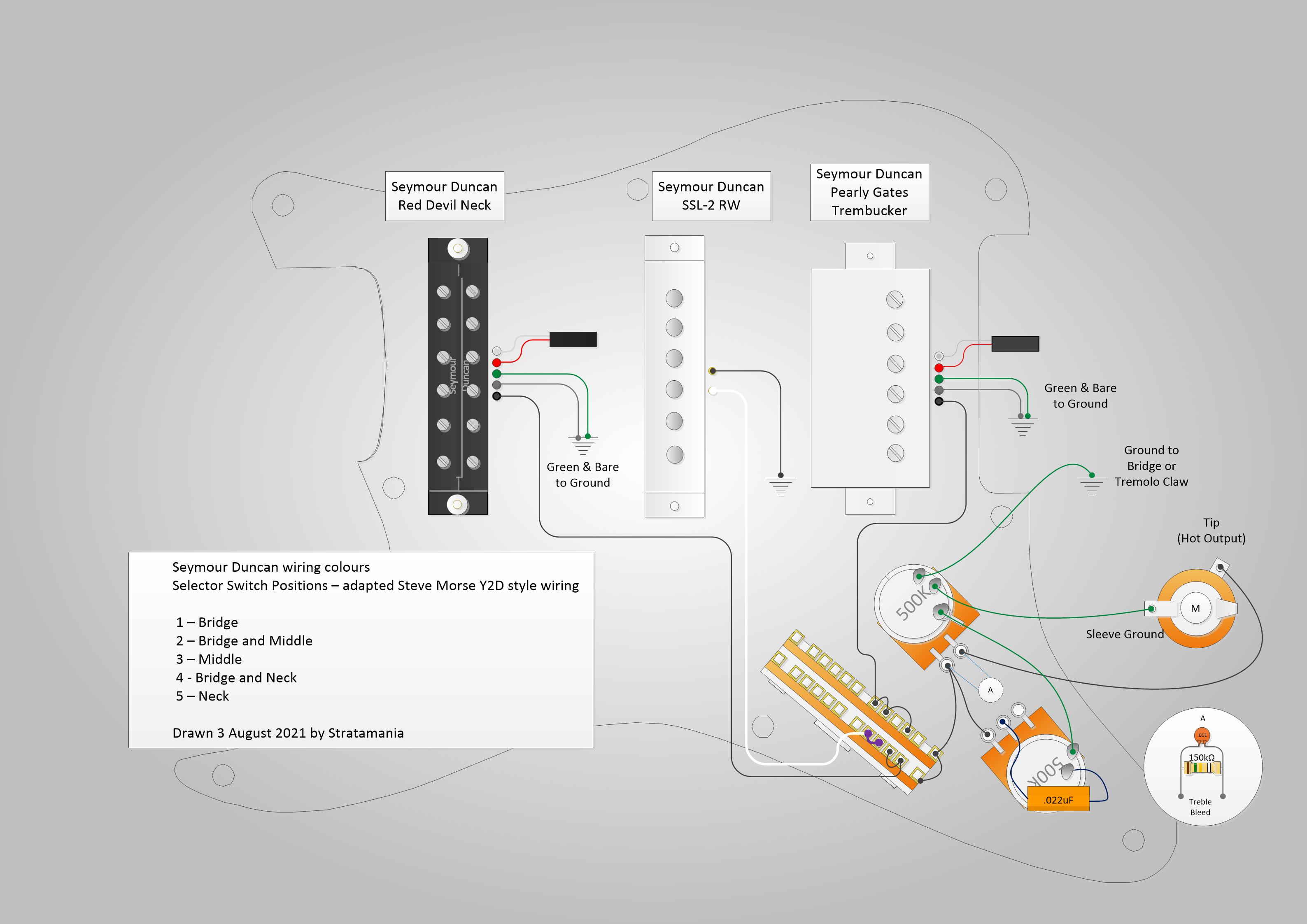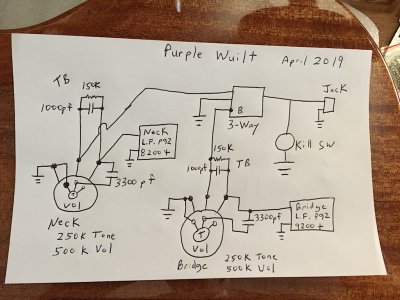Tretgeraet
Junior Member
- Messages
- 130
Hallo Leute,
I just finished my telly build and in the wiring kit I bought from Rockinger, they included a treble bleed, in this example a 150k resistor and a 1nF capacitor in parallel, wired between the hot and middle lug of the volume pot.
I really like the effect and decided that my 7/8 S-Style, having only one humbucker and one volume pot, needs something like this, too.
But Rockinger shys away from giving recommendations, stating that the right recipe is depended on personal taste and which pickups and wiring is used and also what else is in the signal chain, like fuzzes, treble boosters, etc.
So, I'm going to have to experiment, but also, I'm asking you if anyone of you has personal experiences and/or preferences regarding treble bleed.
The guitar in question has a Seymour Duncan '78 model (low to medium output AlNiCo 2 humbucker) and a 500k volume pot. I use it mainly to play Metal, but I also play a huge variety of styles and strive for maximum versatility, as Aaron would call it. I hope everyone here knows what that means.
I hope everyone here knows what that means.
Any experiences? Any recommendations?
I just finished my telly build and in the wiring kit I bought from Rockinger, they included a treble bleed, in this example a 150k resistor and a 1nF capacitor in parallel, wired between the hot and middle lug of the volume pot.
I really like the effect and decided that my 7/8 S-Style, having only one humbucker and one volume pot, needs something like this, too.
But Rockinger shys away from giving recommendations, stating that the right recipe is depended on personal taste and which pickups and wiring is used and also what else is in the signal chain, like fuzzes, treble boosters, etc.
So, I'm going to have to experiment, but also, I'm asking you if anyone of you has personal experiences and/or preferences regarding treble bleed.
The guitar in question has a Seymour Duncan '78 model (low to medium output AlNiCo 2 humbucker) and a 500k volume pot. I use it mainly to play Metal, but I also play a huge variety of styles and strive for maximum versatility, as Aaron would call it.
Any experiences? Any recommendations?






